This was published 6 years ago
Visual arts 2017 year in review: Why curators have the power
By Robert Nelson
In a clever installation by Joshua Petherick, enormous screws bust through the walls of the gallery. Someone, it seems, has been boring through the plaster at Station, missing some imaginary giant stud and threatening the interior with sinister phallic violence, reminiscent of a drill or a warhead.
Well screw you – gallery system, art and subtle symbolism! Petherick's sharp, threaded spikes show art at the pointy end, almost an allegory of the scene at the end of 2017 where so many galleries are held together by nails and string. Even Castlemaine Art Museum had to be rescued by philanthropy.
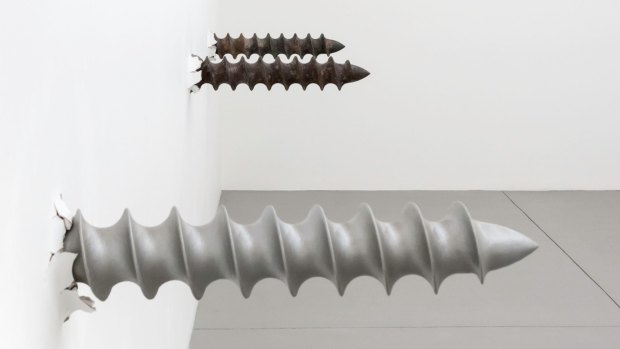
Joshua Petherick's 'Condolences'.Credit: Joshua Petherick
Petherick's big coach bolts provide little reassurance. They suggest great energies pushing outward from the studio but with nothing tangible to fasten onto on the public side of the gallery wall.
The fragility of galleries is seen throughout the globe, as in the "flurry of closures" of small galleries in the world centres documented by Alain Servais in Apollo.
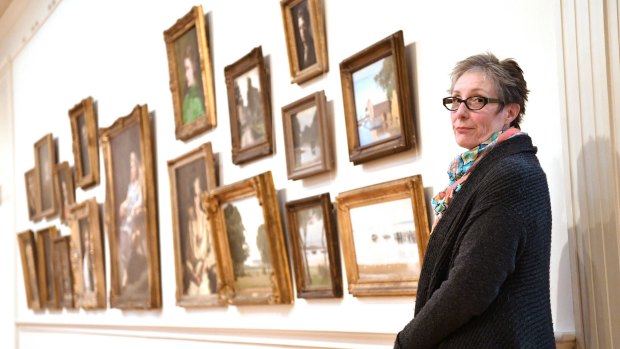
Saved: chair of the Castlemaine Art Gallery board, Jan Savage, earlier this year.Credit: Joe Armao
To some extent, he notes, the pressure on the commercial scene is disguised by "the thriving 1 per cent" of artists who can rely upon sophisticated interest by an equally small proportion of cashed-up collectors.
Galleries often close for reasons that have nothing to do with money. Often, where one goes down another pops up.
The kind of vigour required to keep them going has largely transferred to the artist-run scene, which can afford to take greater risks with new art. But artist-run galleries are also structurally weak, patched together with screws and tape.
In economic language, "artist-run" is a euphemism for "self-funded".
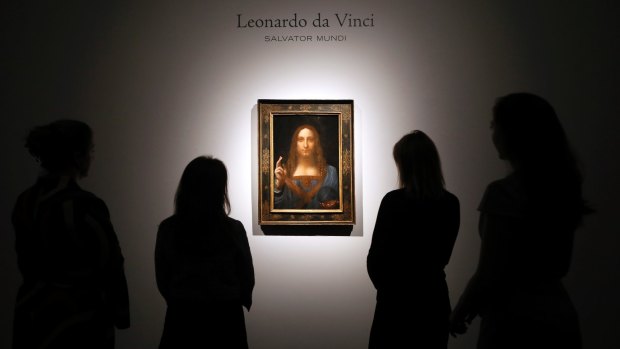
'The 1 per cent' who rule the art world: Leonardo da Vinci's Salvator Mundi fetched a record half a billion dollars this year. Credit: Kirsty Wigglesworth
Lamentation and despair have been a cultural theme since the Renaissance, in the form of "where are they" (ubi sunt). Where are the patrons of old? Where are the state grants and commissions?
And to put a fine point on it, Petherick-style, the art commiserati of the world stood gob-smacked that a small Renaissance Salvator Mundi attributed to Leonardo da Vinci attracted a bid of more than half a billion dollars – a small proportion of which would have shored up the contemporary scene from Brazil to Brunei.
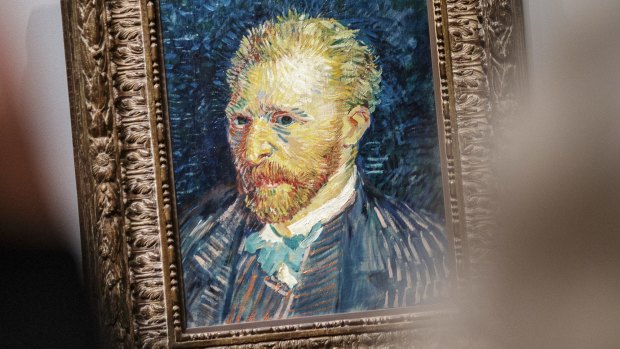
Record numbers of visitors flocked to NGV International in 2017 to view Vincent van Gogh's timeless paintings.Credit: Daniel Pockett
Art is definitely still valued but the problem for contemporary art is that aesthetic experience has become ever more reliant upon external validation. It's even symbolised in old art by the fact that no bidder would pay a fraction of the price for Salvator Mundi if it weren't believed to be a da Vinci.
The public trusts contemporary art if it's at Venice or our own Triennial at the National Gallery of Victoria; but the number of people who will go out independently looking for magic without the curatorial vouchsafe is minuscule.
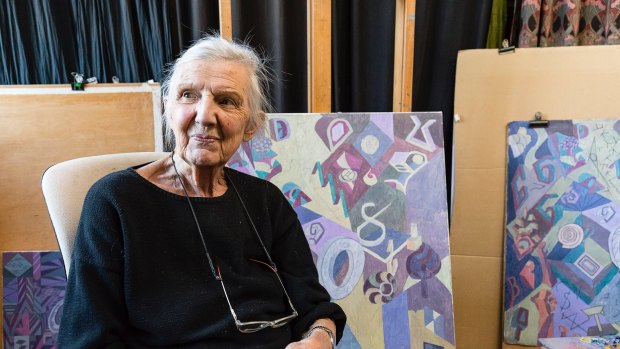
Helen Maudsley in her Melbourne studio.Credit: Selina Ou
The number of people who will go out independently looking for magic without the curatorial vouchsafe is miniscule.
The work of curators is therefore increasingly critical, as imaginative shows are put together with international artists at institutions including the NGV, the Australian Centre for Contemporary Art, Tarrawarra, the Australian Centre for the Moving Image, and the three major university museums at Monash, Melbourne and RMIT.
Deakin, too, is gaining increasing profile, and the marvellous regional galleries at Bendigo, Geelong and elsewhere draw audiences from far and wide.
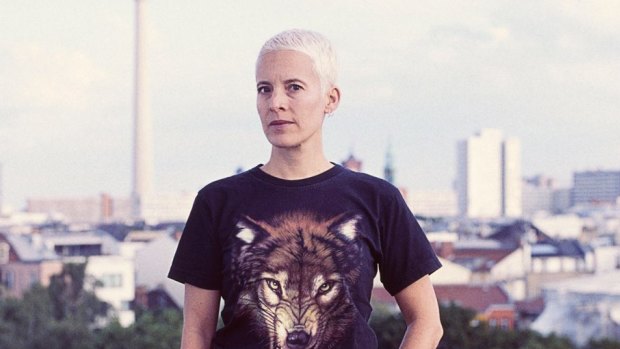
Candice Breitz.Credit: Till Cremer
The excitement in this year's art scene has largely remained with installation, video and photography. Against these, paintings tend to function as a reminder of great traditions – as with the beautiful pictures of Helen Maudsley and the puzzling aesthetic of Gareth Sansom, currently at the NGV – though Van Gogh and the Seasons reminded us of painting's astonishing power to grapple with perception and the subjectivity of seeing.
Yet despite a robust chain of curatorial triumphs, the year has ended in moral vexation for the NGV. As reported in The Age, artists Candice Breitz and Rafael Lozano-Hemmer renamed their Triennial works Wilson Must Go as a protest against its contract with Wilson Security, the company accused of abuse in its management of refugees on Manus Island.
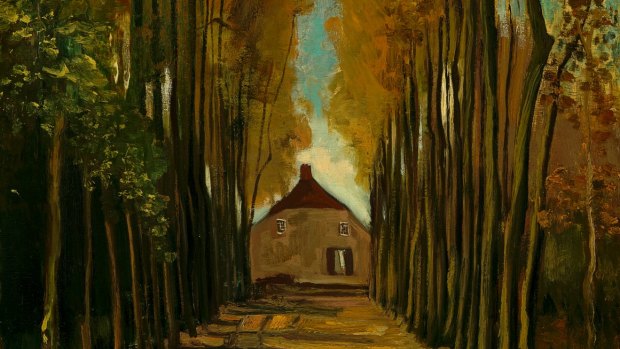
Van Gogh's Avenue of poplars in autumn.Credit: Van Gogh Museum, Amsterdam
Breitz and friends organised a picket outside the gallery ahead of the Triennial's opening, which caused an ugly scene as a man violently forced his way through the protesters.
With any luck the gallery will recognise the spirit of activism and political outreach that have animated art in the past, and embrace the action – even though it offended one or two souls at the one institution that has no risk of giant drill-bits busting up the walls.
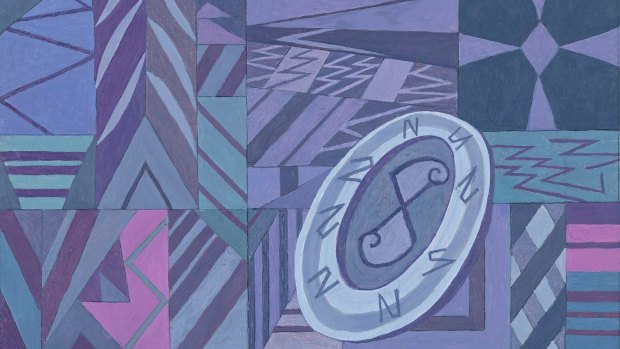
Helen Maudsley's 'The Self: Part of it but no Merging' (detail), 2017. Credit: NGV Australia